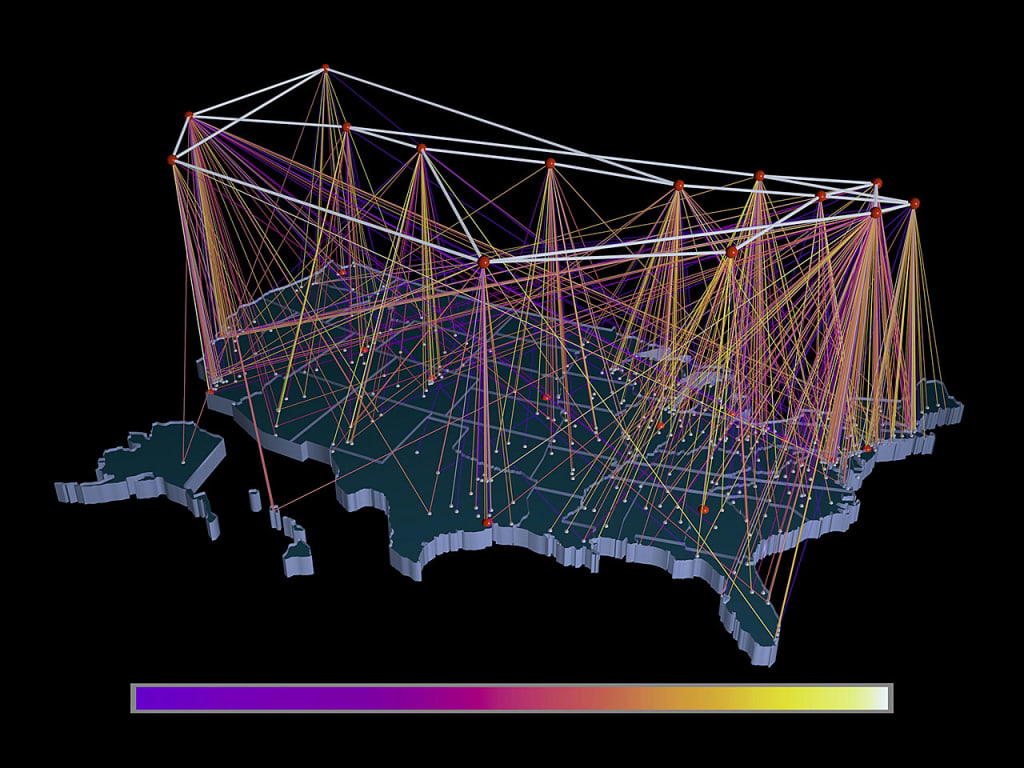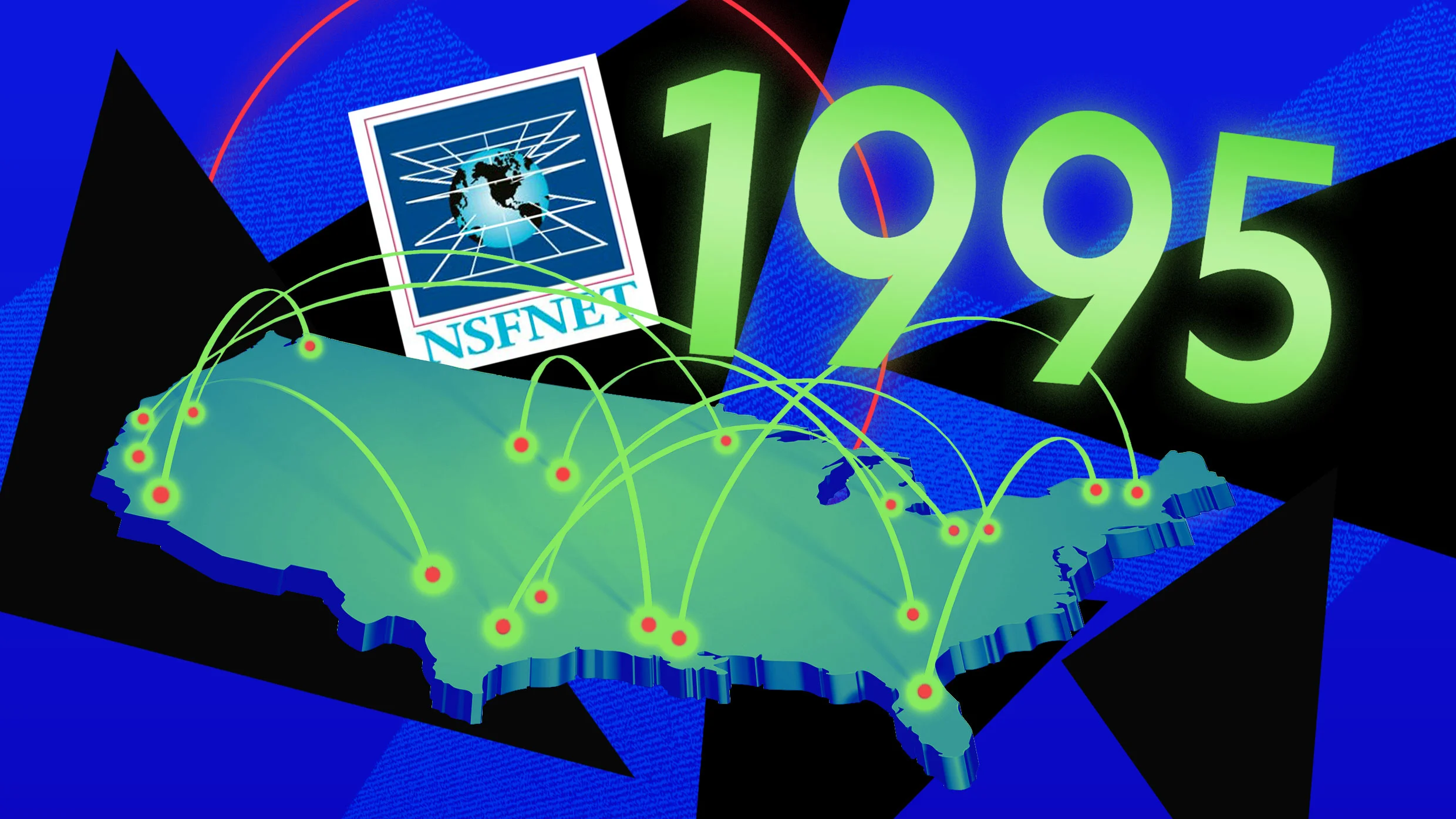The internet wasn’t born whole –it came togeether from parts. MOST Know of Arpanet, The Internet’s Most Famous Precursor, but it was always limited strictly to government use. It was nsfnet that brieft many networks togeether, and the internet that we use today is almost nsfnet itself.
Almost, but not quite: in 1995, the government that had raised the internet from its infancy gave it a firm shove out the door. Call it a graduation, or a coming of age. I think of it as the internet getting its first real job.
In the Early 1980s, the National Science Foundation Surgt to Establish The United States as a Leader in Scientific Computing. The plan required a fleet of supercomputers that researchers could readily use, a Difability Feat When the Computers Routinely Cost More Than the Buildings That Housed Them. Business Computing Had Solved Similar Problems with Time-Shaking and Remote Terminals, And Arpanet Had Demonstrated that Terminals COLD BE Connected to Computers Accounts The COMPUTERS ACOROSS ACORESS Network.
This story is part of 1995 week, where we We’ll revisit some of the most interesting, unexpected, and confounding developments in tech 30 years ago.
The Computer Science Network, or CSNET, was the NSF’s First FORAY INTO INTO Wide Area Networking. It Connected Universities that Didn’T Have Defense Contracts and, as a Result, Had Been Left Out of Arpanet. With dozens of sites, csnet was much smaller than arpanet but proved that a group of universities could share computing resources.
When the NSF Funded five cutting-ed supercomputing centers in 1985, it planned to make them available to users over a similar network. The problem was that big computers invited big data: csnet just wast fast enough for interactive work with large large data sets, and it was Falling Further Behind as Traffic Doublefick Weeks. After A Sluggish 56 kbps pilot effort (About a Thousand Times Slower Than Today’s Common Broadband Connections), The NSF Contracted the University of Michigan to Develop an a also all-to-alle-alle-alle-to Merit-A Michigan Inter-University Network that Had Alredy Started to Expand Its High-Speed Digital Telephone and Geostationary Satellite Links Into Other States. In 1987, The Merit Team Burgt on IBM and Upstart long-distance carrier Mci, freshly invited by the Antitrust Breakup of his Principal Competitor and Truly Feeling Their Oats. They worked at a breakneck pace. In under a year, NSFNET Connected the Supercomputing Centers and a Half Dozen Regional Networks at Blistering T1 Speeds: 1.5 GPS-AANLOMOST 28-Fold Increase.
Just after 8 PM on June 30, 1988, Hans-Werner Braun, The Project’s Co-Principal Investigator, Sent an email to the nsfnet mailing list to announs these new-capacity links-I Long-DISTANCE Computer Connections Ever Deployed-With Typical Scientific Undertatement: “The NSFNET backbone has been reached a state where we wald like to more officially let open opening
Braun’s email “Received Little Notice at the time,” The NSF Wrote in a 2008 Announcement. But “the simple words announced the birth of the modern internet.”
NSFNET was a runaway success. Besides Its Massive Capacity, The Network Maintened An Open Door for Interconnection. Overseas Academic Computer Networks Establed Peer Connections With NSFNET, and in 1989 the federal government open open two federal internet exchanges that routed Traffic berset, and oth Government networks. The superior speed of nsfnet meant that these exchanges served mostly to brings nsfnet to federal users, and arpanet’s fate was seled. The Military Network, Birthplace of Many Internet Technologies, was deemed obsolete and decommissioned the next year. At the turn of the 1990s, NSFNET HAD BCOME The Internet: The Unified Backbone by which regional and institutional networks came togeether.
NSFNET Never Stopped Growing. It was a remarkable problem: at every stage, NSFNET Traffic Grew Faster Thanktipated. During 1989 alone, traffic increase by five times. The state of the art t1 links were overwhelmed, demand a 1991 upgrade to 45 mbps t3 connections. To manage the rapidly expanding infrastructure, the original NSFNET partners formed Advanced Network and Services (Ans). Ans was an independent nonprofit that could be called the first backbone isp, the service provider that service providers themselves connected to.

The popularity of this new communications system was not limited to government and academia. Private Industry Took Note as Well. During 1980s, “Online services” had sprouted: Companies like compserve, playnet, and aol that are often considered early isps but was, in fact, Somenting Else. Online services, for bot businesses and consumers, were walled gardens. They descended from time-shaking systems that Connected users to a single computer, providing only a “curved” experience of software provided by the online service
The internet, in the tradition of arpanet and especially nsfnet, was very different. It was a collection of truly independent networks, autonomous systems, with the freedom to communic across geographical and organizational boundaries. It could feel like chaos, but it also fosted innovation.
The internet offred possibilities that the online services Never Cold. Douglas Van Houweling, Director of the Merit Office, Called NSFNET’s University Origin “The only community that understands that goes that great things can Haappen when no one’s in charge.”
At first, it was contractors who took their business to the internet. Arpanet Had Always Been Strictly for Government Business, But Still, Companies with the Privilege of Arpanet Connections Found it hard not to use them for other work. Despite Prohibites, Arpanet Users Exchanged Personal Messages, Coordinated Visits, and even distributed the first spam. NSFNET’s Much Wider Scope, Welcoming Anyone with a Nexus to Research or Education, Naturally Invited Users to Push the Limits Further.

Besides, The Commercial Internet Was Starting to Form. Cern Engineer Tim Berners-LE HAD HAD HTML and, Along with it, The World Wide Web. In 1993, NCSA –one of the same NSF Supercomputing Centers that NSFNET WAS Built to Connect – Released Mosaic, The First Popular Web Browser. Early private isps, companies like psinet and cerfnet, started out as regional academic networks (New York and California’s). There was obvious business interest, and for cash-strapped academic networks paying customers was hard to turn down. NSFNET Went Into Business on Its Own, with Astablishing Its Own for-Profit Commercial Subsidiary Called Ans Co+Re.
The term “Internet Backbone” Still Finds Use Today, but in a Less Literal Sense. NSFNET truly was the spine of the early 1990s internet, the only interconnection between otherwise disparete networks. It facilitated the internet’s growth, but it also also beCame a gatekeeper: NSF Funding came with the condition that it be used for research and education. NSFNET HAD Alays Kept a somewhat liberal attitude towards Impossible to ignore.
Several commercial isps installed their own exchange, an option for business traffic to bypass nsfnet, but it wouldn Bollywood the Level of Connectivity that NSFNET did. Besides, Ans Itself Opposed Fragmentation of the Internet and Refused to Support Direct Interconnection Between Other isps. In 1992, a series of NSFNET Policy Changes and an act of Congress open the door to business traffic on a more formal basis, but the damage was done. A divide has been formed between the internet as an academic venture and the internet as a business, a divide that was only deepened by Mistrust Between UPSTARNTERNET BUSINET BUSINET BUSINET BUSINESS and Incumbent Providence, Ibm, Ibm, and mc
The network was not the only place that cracks formed. Dating back to arpanet, a database called the domain name system maintained a mapping between numeric addresses and more human-friendly names. While DNS was somewhat distributed, it required a Central Organization to MainTain the Top Level of the Hierchy. There Had been different databases for different networks, but consolidation onto nsfnet required unifying the name system as well. By 1993, all of the former name registries had contracted the work to a single company called network solutions.
At first, Network Solutions Benefited from the same Federal Largesse as NSFNET. Registry services were funded by government contracts and free to users. Requests Came Faster and Faster, Thought, and the Database Grew Larger and Larger. In 1995, Network Solutions Joined The Ranks of the Defense Industrial Complex With An Acquisition by Saic. Along with the new owner came new terms: saic negotiated an amendment to the NSF Contracts that, for the first time, introduced a fee to register a domain name. Claiming a name on the internet would run $ 100 per two years.
By then, Commercial Isps Had Prolified. Despite Policy Changes, NSFNET Remained Less Enthusiastic About Commercial Users Than Academic Ones. Besides, Traffic Hadn’T Stopped Growing, and Improved Routing Technologies Meant The Network Cold Scale Across Multiple Routes. The internet became competitive. MCI, Benefiting from their experience operating nsfnet links, Had Built Its Own Backbone Network. Sprint, Never far Behind Mci, Had One Too. Ans reorganized their assets, Placing Much of his backbone infrastructure under his commercial operations. Government support of the Increasing Profit-Driven internet seemed unwise and, Ultimately, Unnecessary.
In April of 1995, The Internet Changed: NSF Shut down the NSFNET Backbone. The government funded, academically motivated core of the internet was replaced by a haphazard but through interconnection of commercial ventures. Ans, now somewhat loss for purpose, stepped out into the new world of internet industry and sleep its infrastructure to aol. Network Solutions became embroiled in a monopoly controversy that saw dNS reorganized into a system of competitive private registrars. Modems became Standard Equipment on Newly Popular Personal Computers, and Millions of Americans Dialed Into a Commercial isp. We Built Communities, Businesses, and the Shape of the 21st Century Over Infrastructure that Had Been, Just Years Befors, A Collection of Universities with an nsf grant.
The Internet, Born in the 1960s, Spent Its Young Adult Years in the University. It Learned a lot: The policies, the protocols, the basic shape of the internet, all solidified under the tutege of research institutions and the nsf. And then, The Internet Graduated. It went out, got a job, and found its own way. Just where that way leads, we’re still finding out.
The super-early-rate deadline for fast company’s most innovative companies awards is Friday, july 25, at 11:59 PM pt. Apply today.







